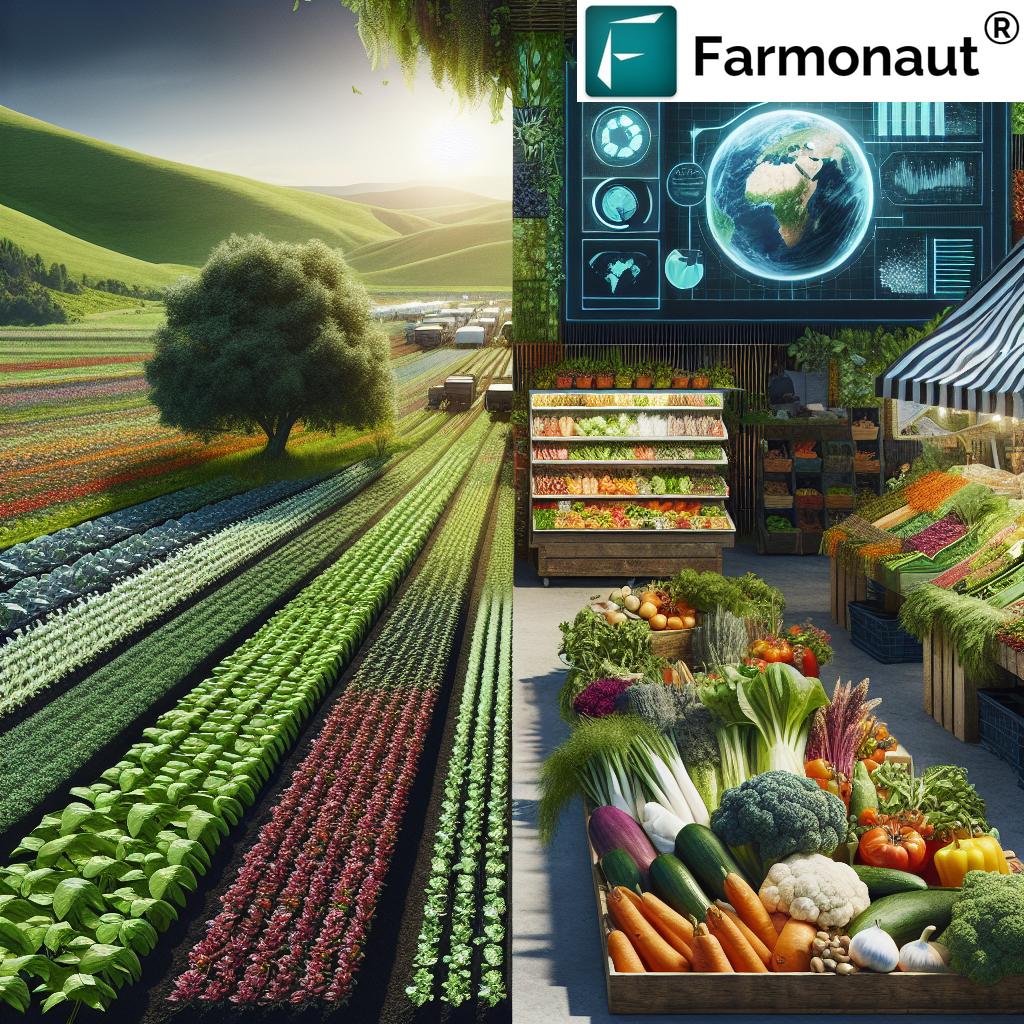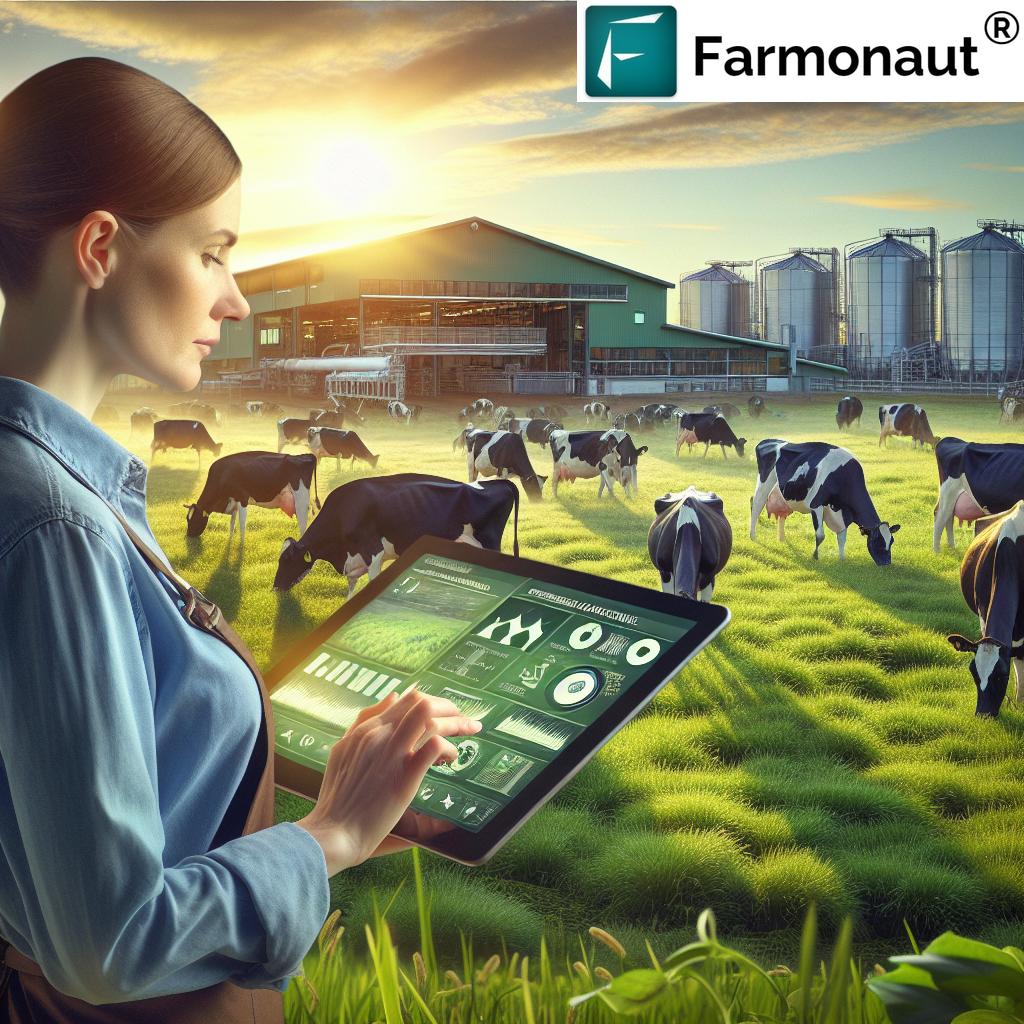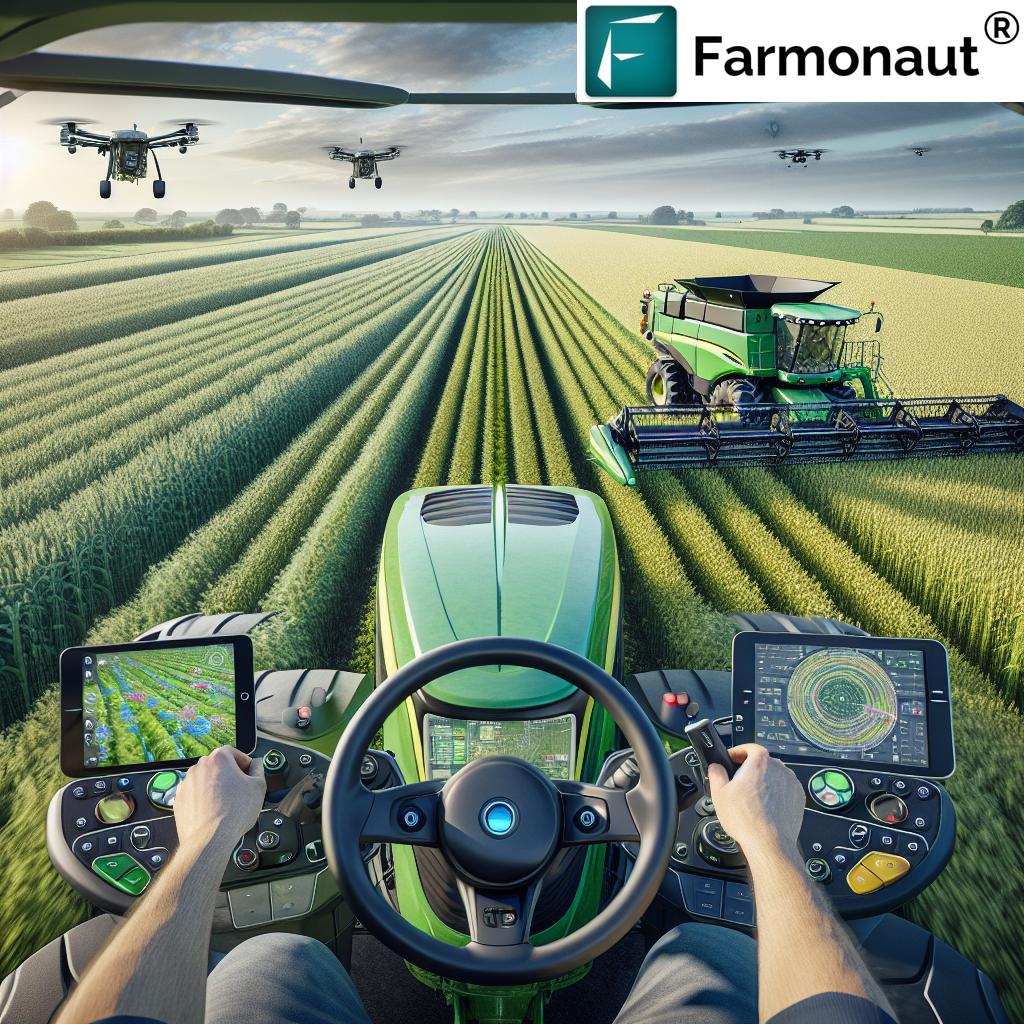UK’s Digital Visa Revolution: What Indian Immigrants Need to Know About eVisas and BRP Transition by March 2025
“By March 2025, 100% of UK visas for Indian immigrants will transition to digital eVisas, eliminating physical BRPs.”
Welcome to our comprehensive guide on the United Kingdom’s transition from physical Biometric Residency Permits (BRPs) to the new digital eVisa system. This monumental shift in immigration policy is set to revolutionize how immigrants, particularly those from India, interact with the UK’s visa system. As we delve into this topic, we’ll explore how this change aligns with broader technological advancements in various sectors, including agriculture, where precision farming and remote sensing are transforming traditional practices.
The Dawn of Digital Visas in the UK
As of December 31, 2024, the United Kingdom will fully embrace a digital-only visa system, marking a significant departure from the physical Biometric Residency Permits (BRPs) that have long been the cornerstone of immigrant identification. This transition primarily affects immigrants, with a notable impact on the Indian community, who have traditionally relied on BRPs as proof of their visa status and right to reside in the UK.
Historically, the UK issued BRPs to immigrants on work or study visas, which they collected from local post offices after arriving. These cards, resembling drivers’ licenses, contained the holder’s photograph and essential visa details, such as validity dates. The BRP served as the primary document validating an immigrant’s legal residency and was required during immigration checks.

The Challenge of Transition
Despite the impending deadline, reports indicate that nearly one million immigrants have yet to successfully transition to eVisas. This lag in adoption can be attributed to several factors:
- Technical complexities in the new system
- Lack of awareness about the transition
- Misconceptions about the necessity of change for those with valid BRPs
To address these issues, the UK government has implemented a grace period, allowing immigrants who have not yet activated their eVisas to continue using their expired BRPs until March 31, 2025. This extension aims to ease the worries of those still navigating the transition and provides additional time for adaptation.
Technological Requirements: The NFC Challenge
A significant barrier to obtaining eVisas is the requirement for immigrants to possess an NFC-enabled mobile device. Near Field Communication (NFC) is a wireless technology that enables short-range communication between devices. This requirement poses challenges for individuals who may not have access to such technology, potentially complicating their application processes.
This technological hurdle draws parallels to the adoption of new technologies in other sectors, such as agriculture. In farming, the integration of precision agriculture technology and remote sensing has faced similar challenges, where access to and understanding of new tools can be a barrier to adoption.
The Impact on Indian Immigrants
The Indian community in the UK, one of the largest immigrant groups, is particularly affected by this transition. Many recent arrivals from India may be under the impression that their physical BRPs, especially if recently issued, are sufficient for their residency status. However, it’s crucial to understand that regardless of the BRP’s expiration date, the transition to digital-only documentation is imminent.
This situation highlights the importance of clear communication and support systems for immigrant communities. Just as farmers require guidance and support when adopting new agricultural technologies like crop monitoring systems or satellite imagery for farming, immigrants need comprehensive assistance in navigating this digital transition.
The Broader Context: Digital Transformation Across Sectors
The UK’s move towards digital visas is part of a larger trend of digital transformation across various sectors. In agriculture, for instance, we’re seeing a similar revolution with the adoption of digital farming solutions. Let’s explore some parallels:
Precision Agriculture Technology in the UK
Just as the eVisa system aims to streamline immigration processes, precision agriculture technology is revolutionizing farming practices across the United Kingdom. From England’s sprawling farms to Scotland’s highlands, Wales’ valleys, and Northern Ireland’s lush fields, farmers are embracing digital solutions to enhance productivity and sustainability.
“Satellite imagery in UK farming has increased crop yield predictions accuracy by up to 90% in some regions.”
Remote Sensing in Agriculture
Remote sensing in agriculture, much like the digital visa system, relies on advanced technology to gather and process crucial information. Farmers across the UK are using satellite imagery and drone technology to monitor crop health, soil conditions, and weather patterns. This technology allows for more precise decision-making, much like how eVisas aim to provide more accurate and efficient immigration management.
Crop Monitoring Systems
The transition from physical BRPs to eVisas can be likened to the shift from traditional crop monitoring methods to advanced digital systems. Modern crop monitoring systems in the UK use a combination of sensors, satellite data, and AI algorithms to provide real-time information on crop health, pest infestations, and nutrient needs. This level of detail and immediacy in agricultural data mirrors the benefits of having digital visa information readily accessible.

Agricultural Data Analytics
The eVisa system’s ability to process and store vast amounts of data efficiently is comparable to the role of agricultural data analytics in modern farming. UK farmers are increasingly relying on data-driven insights to make informed decisions about planting, harvesting, and resource allocation. This shift towards data-centric approaches is transforming both immigration and agriculture sectors.
Smart Farming Techniques Across the UK
As we consider the digital transformation in immigration, it’s worth exploring how smart farming techniques are being applied across different regions of the UK:
England
In England, large-scale farms are leveraging IoT (Internet of Things) devices and AI-powered analytics to optimize crop yields. Farmers in regions like East Anglia are using soil sensors and weather stations to make precise decisions about irrigation and fertilizer application.
Scotland
Scottish farmers, particularly in the highlands, are adopting drone technology for livestock monitoring and crop assessment. This technology is especially useful in rugged terrains where traditional monitoring methods are challenging.
Wales
In Wales, there’s a growing focus on precision livestock farming. Farmers are using wearable technology on animals to monitor health and optimize feeding practices, similar to how eVisas will provide more precise tracking of immigrant status.
Northern Ireland
Northern Irish farmers are at the forefront of adopting farm management apps. These digital tools help in everything from field mapping to financial planning, showcasing how digital solutions can streamline complex processes in both agriculture and immigration.
Soil Health Monitoring and Yield Prediction
The precision and data-driven approach of eVisas finds a parallel in modern soil health monitoring and yield prediction technologies used in UK agriculture. These advanced systems use a combination of:
- Satellite imagery for large-scale monitoring
- Ground sensors for detailed soil analysis
- AI algorithms for predictive modeling
This multi-faceted approach to agriculture data mirrors the comprehensive nature of digital visa systems, where multiple data points are used to create a complete profile of an immigrant’s status.
The Role of Farm Management Apps
Just as immigrants will need to familiarize themselves with new digital visa platforms, UK farmers are increasingly relying on farm management apps. These apps serve as centralized hubs for various farming operations, including:
- Crop planning and rotation
- Resource allocation
- Financial management
- Compliance with agricultural regulations
The adoption of these apps demonstrates how digital solutions can simplify complex processes, a key benefit also expected from the transition to eVisas.
For those interested in exploring cutting-edge agricultural technology solutions, Farmonaut’s web app offers advanced satellite-based crop monitoring capabilities. Additionally, you can access Farmonaut’s services through their Android app or iOS app for on-the-go farm management.
Comparative Analysis: Precision Agriculture Technologies in UK Regions
| Region | Technology Type | Adoption Rate | Primary Crop Application | Environmental Impact | Yield Improvement |
|---|---|---|---|---|---|
| England | Satellite Imagery | 75% | Wheat, Barley | High | 15-20% |
| Scotland | Drone Technology | 60% | Oats, Potatoes | Medium | 10-15% |
| Wales | Soil Sensors | 50% | Grasslands, Dairy | Medium | 8-12% |
| Northern Ireland | Farm Management Apps | 70% | Livestock, Cereals | Low | 5-10% |
This table illustrates the varying adoption rates and impacts of precision agriculture technologies across different UK regions. It’s clear that each region has its unique focus, reflecting the diverse agricultural landscape of the United Kingdom. Similarly, the transition to eVisas may see varied adoption rates across different immigrant communities, necessitating targeted support and communication strategies.
The Future of Farming and Immigration in the UK
As we look towards the future, both the agricultural sector and the immigration system in the UK are poised for significant digital transformation. The eVisa system represents a move towards more efficient, secure, and environmentally friendly immigration processes, much like how precision agriculture is reshaping farming practices.
For those interested in the technical aspects of agricultural data, Farmonaut offers comprehensive API Developer Docs for satellite and weather data integration. This resource can be invaluable for agritech developers looking to create innovative solutions in the field.
Challenges and Opportunities
The transition to eVisas, like the adoption of new agricultural technologies, comes with its set of challenges and opportunities:
Challenges:
- Ensuring digital literacy among all immigrant groups
- Addressing concerns about data security and privacy
- Overcoming technological barriers, such as access to NFC-enabled devices
Opportunities:
- Streamlined and more efficient immigration processes
- Reduced environmental impact through paperless systems
- Enhanced data accuracy and real-time updates of immigrant status
Preparing for the Transition
For Indian immigrants and others affected by this change, preparation is key. Here are some steps to ensure a smooth transition:
- Stay informed about official communications from the UK Home Office
- Ensure you have access to an NFC-enabled device
- Familiarize yourself with the eVisa application process
- Keep all necessary documents digitized and easily accessible
- Seek assistance from authorized immigration advisors if needed
For those interested in staying updated on the latest agricultural technologies, Farmonaut’s API offers real-time access to satellite and weather data, enabling developers and researchers to create innovative solutions for the farming sector.
Conclusion
The UK’s transition to eVisas represents a significant step towards modernizing its immigration system. This change, while challenging, aligns with broader technological trends seen across various sectors, including agriculture. As we’ve explored, the digital transformation in farming through precision agriculture technology, remote sensing, and smart farming techniques offers valuable parallels to the eVisa transition.
Both immigrants and farmers are navigating new digital landscapes, requiring adaptation, learning, and embracing of new technologies. The success of these transitions will depend on clear communication, accessible support systems, and a willingness to engage with new digital tools.
As the March 2025 deadline approaches, it’s crucial for all affected individuals, particularly Indian immigrants, to stay informed and proactive in their transition to the eVisa system. Similarly, UK farmers continuing to adopt and refine their use of digital farming solutions will be key to the future of British agriculture.
The digital revolution in both immigration and agriculture underscores the UK’s commitment to innovation and efficiency. By embracing these changes, both sectors are poised for more streamlined, data-driven, and sustainable futures.
FAQs
- Q: When is the deadline for transitioning to eVisas in the UK?
A: The full transition to eVisas is set for December 31, 2024, with a grace period extending to March 31, 2025. - Q: Do I need to switch to an eVisa if my current BRP is still valid?
A: Yes, regardless of your BRP’s expiration date, all immigrants must transition to the eVisa system by the deadline. - Q: What technology do I need to access my eVisa?
A: You’ll need an NFC-enabled mobile device to access and manage your eVisa. - Q: How does the eVisa system compare to digital farming solutions?
A: Both systems leverage digital technology to improve efficiency, accuracy, and accessibility of crucial information. - Q: Where can I find official information about the eVisa transition?
A: The UK Home Office website is the best source for official information and updates on the eVisa transition.

















